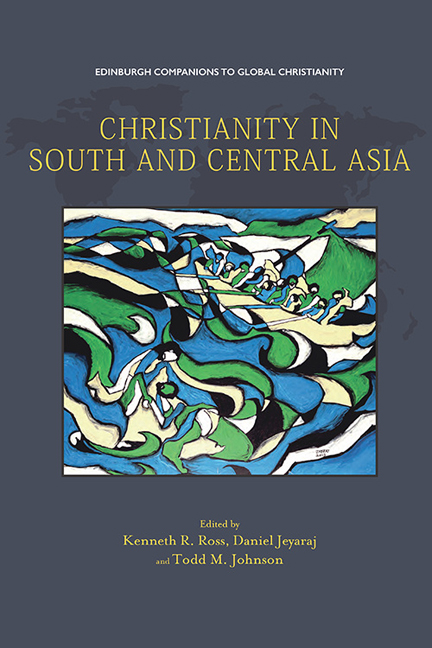Theology
Published online by Cambridge University Press: 30 April 2020
Summary
A common factor in South and Central Asia is the Christian heritage that can be traced back to the early centuries of the Common Era. Strong traditions link the Apostle Thomas to the origin of Christianity in both regions. According to this account, Thomas is believed to have gone to Samarkand (now a city in Uzbekistan) in the first century and appointed several bishops there. In the second and third centuries there were Christians and churches in that region, especially Nestorian Christians. The story in South Asia is not much different. A strong tradition links Thomas to the origin of Christianity in the region, according to which he landed in Cranganore (known in the ancient period as Muziris) on the west coast of India in 52 ce and initially preached to the Jewish settlers in and around Cochin. He subsequently worked among the Hindus and, in the course of time, established seven churches in the region for the Christian converts. Thomas is believed to have died a martyr in Mylapore on the east coast of South India.
Permeation as Christian Witness
The Christology of the early Asian Christians shaped their theology and missionary thinking. Mission was an integral part of their Christology; they believed their calling was to imitate Christ and to follow in his footsteps by sacrificing themselves in order to save the world. Many of them were traders and others were carpenters, smiths or weavers. They travelled as pilgrim preachers, going from place to place and looking after their people as best as they could. Preaching the gospel was a part of their everyday life, and the gulf between the trader preacher and the monk was minimal.
The St Thomas Christians of South Asia developed their Christian witness (outreach) in the early centuries in the midst of a predominantly Hindu society. Though their theology and liturgy were based on the East Syrian rite, in lifestyle and traditions they were essentially Indian. As Anand Amaladass put it, they were ‘Indian in culture, Christian in faith and Syrian in liturgy’.
- Type
- Chapter
- Information
- Christianity in South and Central Asia , pp. 327 - 338Publisher: Edinburgh University PressPrint publication year: 2019



